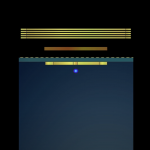Q: GPS satellites used to carry two cesium and two rubidium atomic standards on board. Subsequently, GPS switched to all rubidium clocks. Galileo plans to use hydrogen masers instead. What are the relative merits of these clocks for use in navigation satellites?
A: It is well recognized that the space-qualified atomic clocks in the GPS satellites are an enabling technology, if not the enabling technology for the system. However, they are also one of the more difficult technologies to acquire.
Q: GPS satellites used to carry two cesium and two rubidium atomic standards on board. Subsequently, GPS switched to all rubidium clocks. Galileo plans to use hydrogen masers instead. What are the relative merits of these clocks for use in navigation satellites?
A: It is well recognized that the space-qualified atomic clocks in the GPS satellites are an enabling technology, if not the enabling technology for the system. However, they are also one of the more difficult technologies to acquire.
The first GPS satellites, known as the Block I generation (Navstar Space Vehicles 1–11), initially used three newly developed rubidium clocks. Development of a space-qualified cesium clock subsequently resulted in one of the latter types being added to the satellites’ clock suite, beginning with Navstar 4.
Over time, the GPS development programs for these space-qualified clocks led to the mixture of the different types of clocks used in the satellites. The rationale for their development and use in the GPS system provide answers to the relative merits of the technologies.
We should recognize that space-qualified atomic clocks are unique in the clock technology area. The electronics used in these clocks are one of the biggest differences from their ground-based counterparts. The key cost driver is that they are comprised of space-qualified electronics (Class S or equivalent), which must not only survive the launch environment but also the operational environment (thermal, radiation, etc.) with the objective of remote operation for design lifetimes of 5 to 7.5 years.
(For the rest of Ron Beard’s answer to this question, please download the complete article using the PDF link above.)
Q: What receiver technologies exist for mitigating GNSS pseudorange and carrier phase multipath?
A: Pseudorange and carrier phase multipath errors are the last dominant errors in differential positioning and assume significance in high precision positioning applications. The multipath errors can range from a few meters to a few tens of meters in pseudorange and up to a few centimeters in carrier phase measurements.
Receiver manufacturers have invented various multipath mitigation schemes with varying degree of successes. In general, more research work has been done to mitigate pseudorange multipath errors than those associated with the GNSS carrier phase.
One of the earliest methods of reducing pseudorange multipath errors calls for smoothing the pseudorange measurements with carrier phase measurements. This technique is popularly known as the “Hatch Filter.” The underlying theory of this method is that pseudorange measurements are noisier and more substantially affected by multipath than are the more precise carrier phase measurements.
Carrier phase measurements, however, do not provide absolute ranging information due to integer cycle ambiguity. In the absence of a cycle clip, carrier cycles can be used in conjunction with the raw pseudorange to calculate the smoothed pseudorange. Several popular smoothing techniques exist to accomplish this, although consideration should be given to the effect of code/carrier divergence due to the ionosphere. Carrier smoothing techniques are common in almost all high precision GNSS receivers.
(For the rest of Dr. Jayanta Kumar Ray’s answer to this question, please download the complete article using the PDF link above.)





